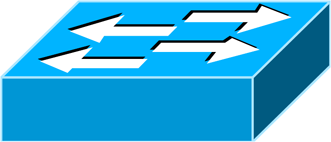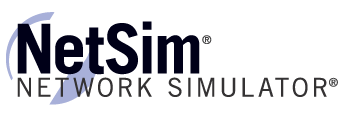By Kailin Acheson
It's been said that legendary coach Vince Lombardi once stood in front of his team of professional football players and stated, "Gentlemen, this is a football." That is starting at the beginning, with the fundamentals. Today we are going to discuss some fundamentals of networking: switches, routers, user EXEC mode, and privileged EXEC mode.
If you are new to the Cisco switch and router scene, unsure of what commands you can enter at the different prompts, or perhaps even unaware of the fact that there are different prompts, this is for you. These concepts are tested in the ICND1 certification exam, so if you are hoping to get your CCENT or CCNA certification, read on.
First, a couple quick explanations of the devices:
A switch provides local connectivity between endpoint devices. It forwards frames to the correct port(s), and it uses physical addresses, such as Media Access Control (MAC) addresses, to do its work. A switch operates at Layer 2, the Data Link layer, of the Open Systems Interconnection (OSI) Model. This is a very basic definition, but that's what we're all about today. In logical topologies, a switch typically looks like this:
Figure 1 - Switch
A router provides network connectivity between computer networks. It forwards packets to the correct destination network(s), and it uses logical addresses, such as Internet Protocol (IP) addresses, to do its work. A router operates at Layer 3, the Network layer, of the OSI Model. Again, this is a basic definition, which serves our purpose. In logical topologies, a router typically looks like this:
Figure 2 - Router
You can connect to each of these devices (and others) by using a command line. On Cisco devices, there are different levels of access for the command line, which are called EXEC modes. The two EXEC modes are user EXEC mode and privileged EXEC mode. User EXEC mode is the initial mode and is represented by a greater than sign (>); for example, on a switch, when you initially log in, you might see Switch>. Privileged EXEC mode is a mode that can be accessed when you issue the enable command and any necessary authentication information; this mode is represented by a pound sign (#) and might appear as Switch#.
Security is one of the main reasons for the two modes. User EXEC mode is the initial default mode, so potentially anyone could access it. Privileged EXEC mode can be secured, so only those with proper credentials should be able to access it and make configuration changes.
|
Has the prompt Switch> |
Has the prompt Switch# |
|
Is the initial default mode |
Requires the enable command for access |
|
Is easily accessible and not as easily secured |
Can be easily secured and thus less accessible |
|
Contains very few basic commands, including help and show |
Contains a broad range of commands, including help and show as well as numerous others |
|
Does not allow for configuration changes |
Allows for configuration changes and access to additional modes |
You can get an idea of the commands available from each EXEC mode by issuing the question mark (?) command. Figure 3 shows, from the Boson NetSim Network Simulator, a sample of available switch commands from user EXEC mode:
Figure 3 - User EXEC Mode Switch Commands
Figure 4 shows a sample of available switch commands from privileged EXEC mode:
Figure 4 - Privileged EXEC Mode Switch Commands
From privileged EXEC mode, you can return to user EXEC mode by issuing the exit command.
From privileged EXEC mode, you can issue the configure terminal command to access global configuration mode, from which you can access additional modes such as interface configuration mode and subinterface configuration mode. But because this is a blog about the access mode basics, I'm saving those for another time. Come back soon to read more about those modes.
Part two is now available here: http://blog.boson.com/bid/87424/Back-to-the-Basics-Device-Access-Modes-Part-2.
 If you're studying for your CCENT, CCNA or CCNP certification exams, check out the NetSim demo.
If you're studying for your CCENT, CCNA or CCNP certification exams, check out the NetSim demo.


